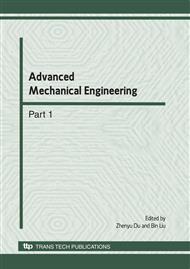p.813
p.817
p.821
p.826
p.830
p.835
p.839
p.843
p.847
Durability of Wood-PMMA Composite
Abstract:
Wood-PMMA composite was manufactured by impregnating methyl methacralyte (MMA) monomers into wood porous structure, followed by in-situ polymerization through catalyst-thermal treatment. The structure was simply analyzed by SEM and FTIR, and its durability was also examined. The results indicate that PMMA polymer generated in wood cellular structure, and interacted with wood cell walls, resulting in chemical combination between them. The durability involving dimensional stability, water repellency, decay resistance as well as acid resistance was whole improved over untreated wood. Such composite enhancing wood values can be used as structural furniture material and traffic material.
Info:
Periodical:
Pages:
830-834
Citation:
Online since:
June 2010
Authors:
Price:
Сopyright:
© 2010 Trans Tech Publications Ltd. All Rights Reserved
Share:
Citation:


